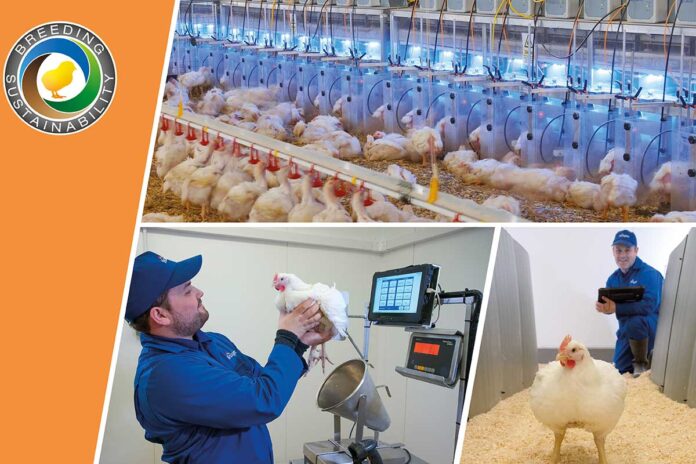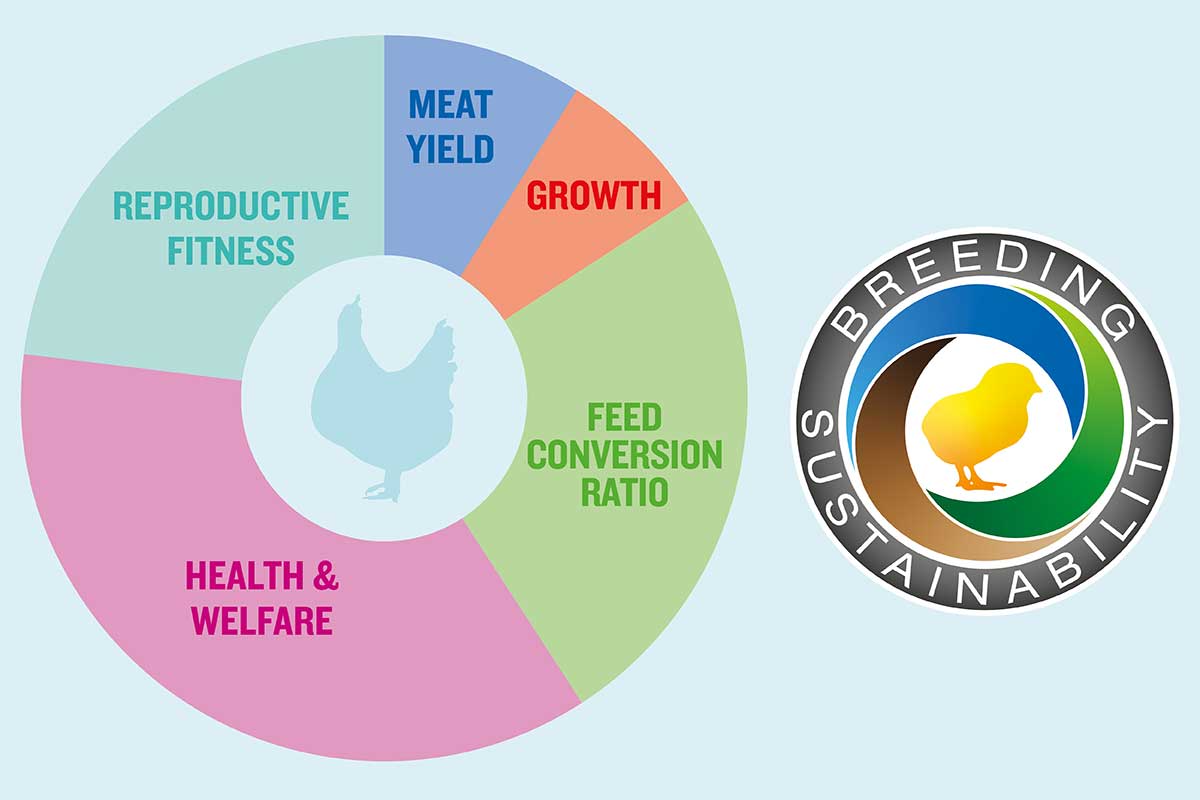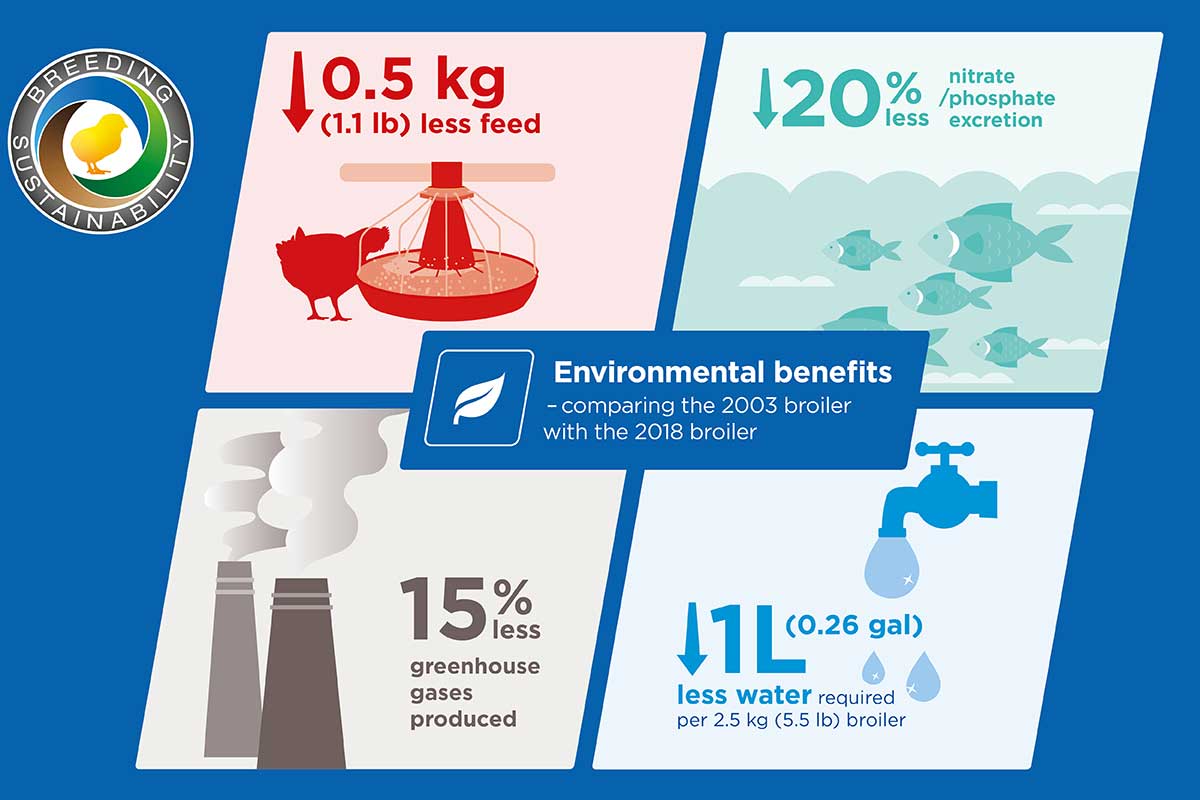
Our global population is predicted to grow to 9.8 billion by 2050. As we approach the challenge of how to produce enough food to meet the needs of these extra 2 billion people, the world’s producers must do so in a way that is environmentally responsible.
According to Magnus Swalander, Director of R&D and General Manager of Aviagen® Ltd, the answer may lie in achieving “balance”. Swedish author Rachel Brathen once said, “Balance is key. In everything you do,” and Aviagen has made “Balanced Breeding” #3 of its Top 5 Commitments. Through this balanced approach, Aviagen addresses three of the five United Nations’ Sustainable Development Goals (SDGs) prioritised by the International Poultry Council: Zero Hunger (SDG2), Good health and wellbeing (SDG9) and Climate Action (SDG13). In this article, Magnus further explains Aviagen’s Balanced Breeding philosophy.

Health and welfare – Foundation of sustainability
“Balanced is the best word to describe our breeding programme, because it encompasses everything we care about: we know that our customers are passionate about their birds, and so are we. That is why we make bird health and wellbeing a top priority and a major focus of our responsible research and development. You may find it interesting that, through balanced breeding, we have been able to improve more than 50 production, health and welfare traits simultaneously, while at the same time protecting biodiversity. (Learn more about our commitment to biodiversity in our article, “Biodiversity – Breeding choice for markets of today and tomorrow”, see Zootecnica InternatIonal, October 2021 issue).
We work daily to support our customers in their effort to eradicate hunger in their local communities by supplying an affordable, nutritious, popular and responsible source of protein – the production of which is gentler on our planet compared to other meats (source: OurWorldinData). Another compelling reality is that birds with better health and welfare also perform better and, in doing so, contribute to the economic sustainability of poultry growers. For example, they have better liveability, and are hardier, more resistant to the world’s varying climate conditions. This goes back to our goal of responsible balanced breeding, and some of the same technologies that have assisted our selection of birds with greater health, have also improved performance for the benefit of our valued customers. We are thus able to help provide better economics with birds that have superior meat yield and daily weight gain on the broiler side, and excellent reproductive traits, chick and egg numbers and hatchability as breeder traits.”
FCR – Driver of sustainability
“Aviagen is devoted to protecting the planet and providing a positive and responsible environmental heritage for our children and grandchildren. A main driver of sustainability has been our year-on-year advancement in Feed Conversion Ratio (FCR), or the efficiency with which feed is converted to body weight. Through selection, a reduced amount of feed is needed to produce healthy, robust birds with excellent welfare, which has a distinct positive impact on the environmental, economic and social pillars of sustainability. Improvement in FCR is therefore a major component of sustainable and responsible poultry production.
Here is some background. In the 15 years between 2003 and 2018, our selection strategy led to diminishing the feed requirement per kilogram (kg) of broiler live weight by 215 grams. This means that our broilers now require about 0.5 kg less feed to reach 2.5 kg than they did 15 years ago. In addition, a lower feed intake decreases nitrate and phosphate excretions by 20%, and lessens greenhouse gas production by 15%.
Less feed also equates to not as much land needed to grow the feed. It has been estimated that our yearly FCR improvements have translated to land savings of about 0.656 million hectares (1.6 million acres) per year. That is twice the size of the country of Luxembourg. Preserving our land is important, as the land that is saved can be used to grow crops for food production, or left alone as natural wildlife habitats.
What’s more, when birds consume less feed, they also need a smaller amount of water, offering further advantages by preserving one of the world’s most valuable resources. A robust, 2.5-kilogram bird now has a 1-liter decrease in water requirements than was true 15 years ago. Achieving optimal water intake also benefits the birds with more robust gut function and better footpad health (through enhanced litter quality).
Continuing our theme of balanced breeding, the FCR advantage balances environmental benefits with economic gains. What do you think represents the single highest cost of doing business for our world’s chicken meat producers? You no doubt thought “feed,” and you guessed correctly. Therefore, with outstanding feed efficiency, farmers are able to produce more with less, and that is a significant value proposition. The social implication is they are now in a great position to make healthy and nutritious chicken meat readily available to families in their local communities, leading to #ZeroHunger worldwide”.

Health, welfare and sustainability – The perfect balance
“Because of our balanced breeding approach, Aviagen shows a dedication to steadily and responsibly enhance bird performance, and at the same time promote health, welfare and sustainability. Balance is an essential element in feeding a growing global population, while minimising the carbon footprint of poultry production and its impact on climate change. Balanced breeding of a valuable food source is a commitment we take seriously, because we are responsible and care about our customers and the communities they serve, our birds, and the planet we call home.”
Read more on Aviagen’s Top 5 Commitments in this interactive Breeding Sustainability presentation [https://eu.aviagen.com/assets/Sustainability/2021/index.html?global=1].

















